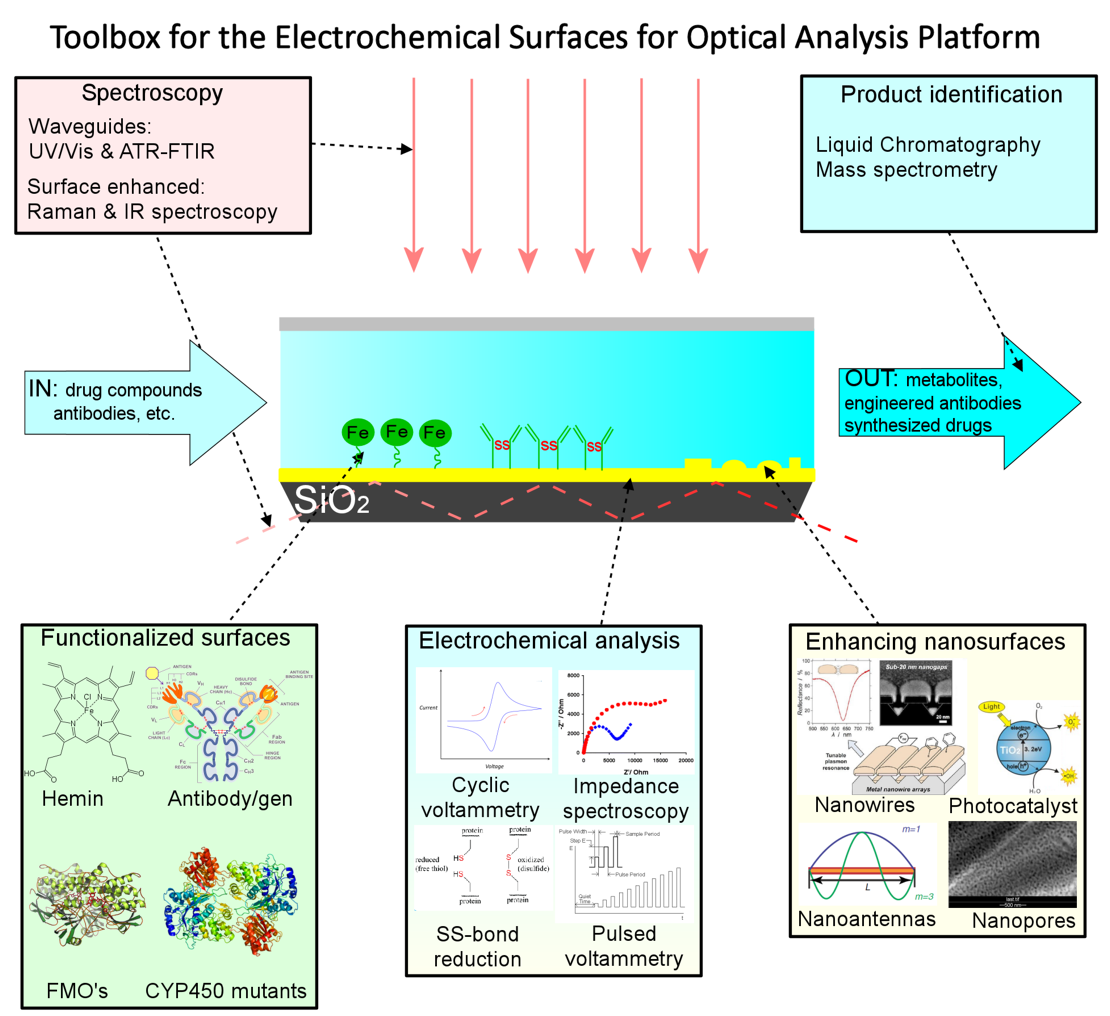The topic of this project is the electrochemical mimicry of biologic processes, e.g. oxidative metabolism and cleavage and reduction of proteins, in a purely instrumental and microfluidic approach. The advantage to this approach is the lack of additional sample preparation and cleaning steps prior to and after the mainly enzymatic steps employed in the established in vitro methods. Especially the fast analysis of metabolism products via a microchip can play an important role in the lengthy test periods of drug toxicity studies, avoiding the unnecessary costs of in vivo studies in case of unfit metabolites. In the field of proteomics, a microfluidic device shows unique properties. It is possible to cleave Proteins selectively next to the amino acids Tyrosine and Tryptophan via different intermediates, which also allow labelling reactions to be employed. Proteins can also be processed electrochemically by reducing disulfide bridges without employing chemical means and evading complex and time-consuming sample preparation steps.
To optimize these complex electrochemical reactions, this project will focus on the employment of VIS/IR/Raman-spectroscopic methods to gain insight into the reaction mechanisms taking place. Therefore, surface enhancement and waveguide technologies are used to gain sufficient sensitivity. Based on these findings and optimizations, a large‑scale flow-through reactor cell fit for commercial applications will be developed.

